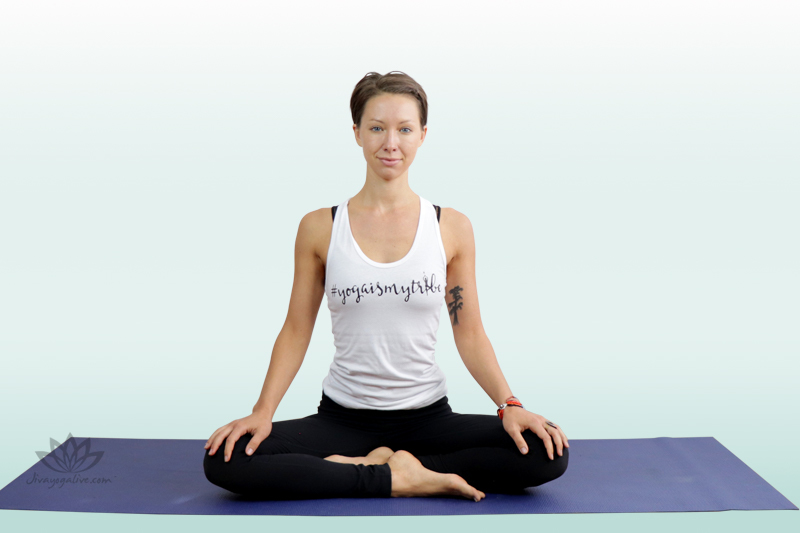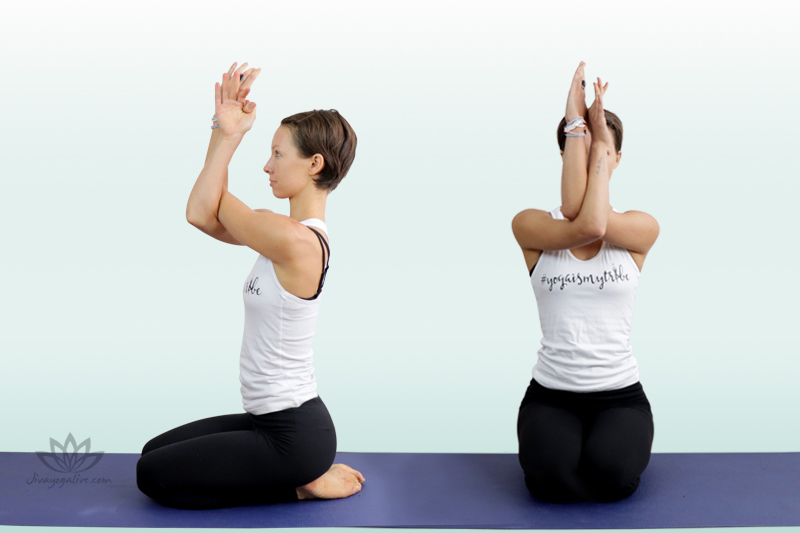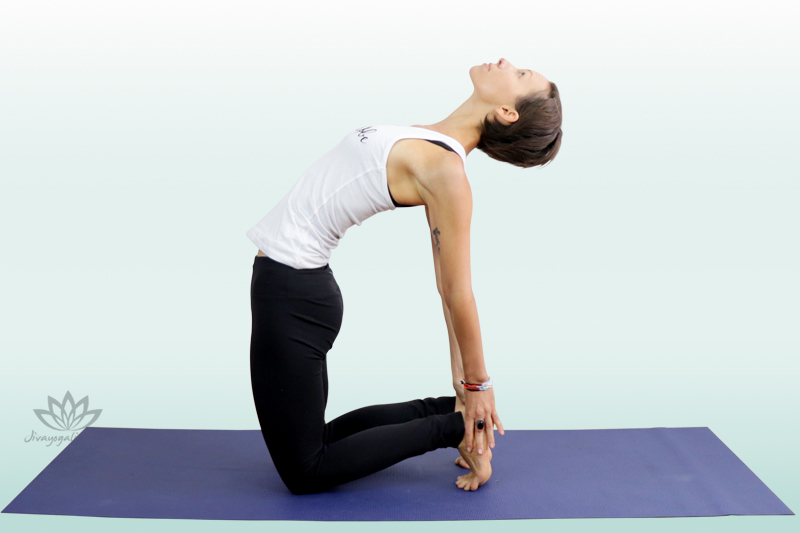Understand the Link Between Neck Pain and Headache Exercises
Neck pain and headache exercises are often overlooked, yet they are critical when addressing recurring head pain. What you feel in one part of your body often triggers sensations in another. This makes sense—our body is a complex system of interconnected parts—but identifying which issue causes another can be far from simple. Frequent headaches, for instance, rarely occur in isolation. One of the most common and frequently ignored sources? Poor posture.
Poor Posture is a Common Cause of Headaches
When your head juts forward—like when you’re reading your phone or hunched over a laptop—it puts a strain on the neck and jaw. This tension easily builds up and can trigger persistent headaches. That’s where targeted neck pain and headache exercises come in. These exercises, especially when integrated with yoga, directly help reduce this strain, improve alignment, and ease related discomfort.
How Neck Pain and Headache Exercises Release Pain
Yoga is incredibly effective in correcting posture-related tension that causes headaches. Through deep stretching, intentional breathing, and alignment-based poses, yoga strengthens the neck and back muscles while relaxing tight shoulders and jaws. In fact, a study found that incorporating yoga alongside conventional treatment helped patients significantly reduce both the frequency and intensity of migraines. That’s a major win for anyone seeking natural headache relief.
A Personal Experience with Posture and Pain
Having grown up in a military family and studied dance from a young age, I was fortunate to develop a strong sense of posture early on. I maintained that discipline through college yoga classes. However, even good habits can slip. Traveling for long hours or spending too much time reading or journaling can lead me to slouch. That’s when I notice my neck pain returning—and soon after, the headaches follow. But when I return to my neck pain and headache exercises, the relief is almost immediate.
Why You Should Prioritize Postural Alignment
According to the American Council on Exercise, yoga not only improves posture but also “massages the skeletal system, which supports bone mass and growth, while reducing tension in the supporting muscles and tendons.” That means it doesn’t just feel good—it supports long-term structural health. When you commit to regular neck pain and headache exercises, you’re giving your body a chance to reset. You align your spine, relax your muscles, and reduce the tension that contributes to your headaches.
Start Simple, Stay Consistent
If you suffer from frequent headaches and notice tension in your neck or shoulders, examine your posture throughout the day. Are you leaning over your phone? Slouching at your desk? These small habits have big consequences. Start integrating neck pain and headache exercises into your daily routine. A simple yoga flow—designed to open the chest, strengthen the neck, and release the jaw—can provide lasting relief.

TRAINING TYPE: FLOW SEQUENCE
CATEGORY:YOGA
SUBCATEGORY:RECOVERY
PLANNED TIME:15 MIN
LEVEL:ALL LEVELS
PROPS:NONE
20 Minute Restorative Yoga Flow For Neck Pain and Headaches
This restorative flow for neck pain and headaches will cover a sequence of seven poses that will leave you feeling open and relieved in your neck and shoulders. These poses focus on opening through the upper back and neck in order to release tension and pain. These stretches can accommodate any level of practice from beginner to advanced yogi. This flow is perfect for relieving pain from poor posture, time spent over a desk or device, and residual soreness from other physical activities. For those suffering from chronic pain in the neck and shoulders, practicing this sequence daily will maximize the benefits of the postures. No props are needed for this sequence and it’s perfect for practicing anytime, anywhere!
Yoga For Neck and Shoulder Pain Infographic

Easy Pose – Sukhasana
Starting from an easy sitting posture, we’ll begin this practice by warming up the neck and shoulders with some gentle rolling movements. With the hands resting gently on the knees, raise the shoulders towards the ears and roll the shoulder blades down the back. Continue this movement while breathing into the space at the base of the neck and between the shoulders. After a few breaths, reverse the direction and continue the same movement in the forward direction.
From Easy Pose, make sure the spine is tall with heart over hips and head over heart. Breathe deeply from the base of the spine all the way to the crown of the head. Exhale and follow the nose down toward the chest. Inhale and follow the nose toward the sky. Exhale the nose back down toward the chest and continue the flow matching your breath with each movement allowing space to open in the back of the neck.Return the gaze to neutral, inhale. Exhale turn the gaze over the right shoulder. Inhale back to center, exhale look over the left shoulder. Continue inhaling back to center and exhaling over the shoulder for a few breaths.
Coming back to neutral in the center, inhale and exhale drop the right ear to the right shoulder. Inhale to center and exhale the left ear to the left shoulder. Continue this for a few breaths, making sure to focus the breath on expanding the space in the neck and tops of the shoulders.

Thread The Needle Pose – Parsva Balasana
Come into a table top position, perhaps taking a moment to move through a few cat/cows and when you’re ready, open the right hand up towards the sky allowing the gaze to follow and opening across the chest and through the back of the right shoulder. Exhale, return the right hand to the mat, palm spread wide. Inhale, repeat by opening on the left side. Exhale the left hand back to the mat. Inhale the right arm up, open through the chest.
Exhale, bring the right arm down and “thread” underneath the left arm as the hips sink back to heels. Let the right arm, shoulder and cheek rest against the mat. Breathe deeply here into the shoulder blades and neck, keeping the left arm active and palm wide. Breathe. On an inhale, unwind, exhale return to table top. Inhale the left arm up, exhale “thread” the left hand under the right arm and repeat on this side. After a few breaths, return to Table Top.

Rabbit Pose – Sasangasana
Come to a kneeling position with toes tucked under the glutes. Inhale and reach both hands behind the body to cup the heels with thumbs on the outside of the foot. Exhale the chin towards the chest and fold forward bringing the crown of the head to the floor with the forehead coming as close to the knees as comfortable. Inhale and lift the hips to the sky allowing the arms to extend. Breathe deeply into the back body, especially focusing on the thoracic spine. Be careful not to place too much weight on the head. Allow the legs to support the posture. Release the posture by lifting the head and rolling the torso up one vertebrae at a time.

Eagle Pose Variation – Garudasana
Return to sitting on the knees and heels. Inhale the arms wide into a T position, exhale and cross the arms in front of the chest, left arm over right. Bend the elbows and hook thumbs together allowing the forearms to connect. Lift the hands toward the sky, feeling the stretch in the back of the neck and shoulders. Breathe here. Uncross the arms, inhaling again to a T shape and exhale cross the arms again, this time bringing the right arm over the left. Hook the thumbs, raise the hands, and breathe again, creating space with each inhalation and finding release and ease with each exhalation. After a few breaths, release the posture.

Half Lord of the Fishes Pose – Ardha Matsyendrasana
Come into a seated position, sit bones on the floor and legs extended in front of the body. Flex the feet and acctivate through both legs. Make the spine tall. Bend the right knee bringing the right heel parallel with the left knee. Inhale the right arm over head and exhale bring it behind the body, pressing the palm into the ground and the arm against the back body for support. Inhale the left arm over head and exhale, bend the left elbow as it crosses over to the outside of the right knee. Tuck the navel into the spine and twist from the lower abdomen. Press the elbow and knee into each other and turn the gaze over the right shoulder.
With each inhale think about lifting the spine, with each exhale think about opening through the chest and right shoulder. On an exhale, unwind releasing the posture. Change the legs, extending the right and bending the left. Repeat the posture on the left side.

Camel Pose – Ustrasana
Come into Easy Pose. Inhale both arms above the head and exhale bring fingertips to tops of shoulders. Ground through sit bones, open through chest. Inhale and with the exhale quickly twist the whole torso and gaze to the right. Inhale quickly unwinding to center and carry the movement across on the exhale, twisting to the left. Continue this movement for twenty exhales, maintaining momentum and the same pace for each breath.
The focus of the breath should be on the exhale, the inhale will occur naturally as the body unwinds back to center. This breathing practice helps open the whole spine and move breath and prana throughout the entire torso.
Camel Pose – Ustrasana

Kundalini Pranayama – Side Twists
Come into Easy Pose. Inhale both arms above the head and exhale bring fingertips to tops of shoulders. Ground through sit bones, open through chest. Inhale and with the exhale quickly twist the whole torso and gaze to the right. Inhale quickly unwinding to center and carry the movement across on the exhale, twisting to the left. Continue this movement for twenty exhales, maintaining momentum and the same pace for each breath.
The focus of the breath should be on the exhale, the inhale will occur naturally as the body unwinds back to center. This breathing practice helps open the whole spine and move breath and prana throughout the entire torso.

Featured Video: 7 Neck and Shoulder Yoga Poses For Instant Pain Relief
Yoga Neck and Headache Exercises Pain Relief
To begin reconditioning the body with better posture, start by finding more mobility in the neck and shoulders. This helps loosen up the muscles, thus relieving tension, and with consistency of practice, will lead to a greater range of motion. Having more range of motion and strength in the muscles are keys to creating good posture to support the body. Before jumping into any deep stretches in this area, start by working out a little tension and creating a little space with simple warm ups. An easy way to warm up the area is to take a minute or two doing some gentle neck and shoulder rolls. Take semi-circles with the neck, leading the motion from the tip of your nose in order to protect the neck from hyper-extension. Hunch the shoulders up and down and alternate rolling them forward and then backward. Keep in mind that you can always incorporate this into postures like Cat and Cow, Downward Facing Dog, Reverse Prayer, or any stabilized posture that allows you to safely find organic movement in your neck and shoulders. If you spend many hours at a desk, computer, in a vehicle, etc., try giving yourself some moments throughout the day to open this space a little. It will relieve tension and allow the body to release stress and pain.
Yoga for Upper Back and Neck Pain
For upper back and neck pain, especially pain coming from posture, finding that happy balance between flexibility and strength is key. There are many postures that give us the option to explore these benefits in a way that meets us wherever we are in our practice, whether we’ve just begun our first yoga classes, or we’re half-way to enlightenment. Cobra and Child’s Pose are two of my favorites that offer this range of depth.Cobra Pose, Bhujangasana, is practiced on the floor, so right from the get-go we have the benefit of the ground right below us supporting this posture. (Remember Newton’s third law and don’t forget to use the energy of the ground in your postures!) The movement of Cobra stretches from the lower abs and hip flexors to the chest, the upper back and into the neck. By pushing into the earth and keeping the elbows tucked close to the body, we build strength in the muscles of our arms, back and chest and shoulders. This “baby backbend” is so good for opening and strengthening the upper body.Counter your Cobra Pose with restorative Child’s Pose, Balasana. This is a very gentle, semi-inversion that lowers the heart rate and calms the nervous system, allowing the mind to become calm and the body to relax. Not a bad complement to relieving painful tension. For an active experience in this posture, keep the arms lifted away from the ground and breath deeply, extending from the tailbone to the crown of the head.
Healing Your Neck and Shoulders After Pain
Exploring modifications of poses is one of the best ways to bring more healing into your yoga practice. There is so much respect and wisdom that comes from honoring the body where it is, rather than forcing it to where it “should” be. Don’t be afraid to have props on standby when you go to a studio class. If you don’t have blocks, bolsters and straps at home, get creative with books, blankets and scarves! Matsyasana, Fish Pose, is a beautiful and highly beneficial posture for neck and shoulder pain. None of this is lost when practiced with the support of a block or two. Placing a block between the space of the shoulder blades allows the chest to lift and the shoulders to stretch and open. Support from the block alleviates stress in the neck if your muscles are not yet strong enough to hold the backward extension on their own. If you are practicing with a migraine or neck injury, definitely support the head with a block, rather than dropping it entirely to the floor.This supported Fish Pose opens the lumbar, thoracic and cervical spine, conditioning the body for better posture. It also opens the chest, the heart space, physically and energetically, which is so critical for the process of healing. This healing posture gets its name from the incarnation of Lord Vishnu as the fish, Matsya, who came to Earth during a time of extreme corruption. A flood was filling the planet, purging it from the excessive evil. In order to preserve goodness and balance, Matsya saved the sages of the earth, protecting their wisdom and knowledge for new generations.As you practice this pose and breathe space and healing into your body, connect to the innate wisdom of your body as a self-healing machine and the wisdom that has been carried through generations of yogic tradition.
How Yoga Can Help Shoulder Blade Pain
For relieving pain and tension in the upper body, Child’s Pose is an anytime, anywhere go-to pose. If you want to take it a little further to get deeper into your shoulder blades, thread the needle pose is a great variation to practice.The restorative nature of this posture is already great for relaxing the parasympathetic nervous system, allowing both the mind and body to find stillness. The twist of the torso and extension of the raised arm helps you to find a deeper stretch in the back of the shoulder blade, the chest and in the neck. From the rotation you can also feel the release of some tension in the lower back. Vinyasa teacher Jason Crandell writes, “Yoga is the perfect opportunity to be curious about who you are.” I love that and couldn’t agree more. I encourage you to see your practice as an opportunity to explore who you are and who you could be, and practice letting go of any “should bes”. Allow your healing process to unfold without force, to blossom. Be curious in your poses, in your mind and with your spirit. May you be well!
Conclusion
Finish the practice by coming into Savasana and allow the body to relax completely, letting go of control of the breath. Hopefully this flow with neck pain and headache exercises has helped to release any excess tension of stress that’s been held.
The chest and upper back should feel much more open and the posture of the torso overall should feel more lifted and straightened. Try practicing these postures every day to relieve stiffness and pain and to improve your posture.
About
Hillary
Hillary is a natural-born wanderer and wonderer. A digital nomad and pilgrim of the heart, she often feels herself a poster child of the Spiritual Millennial. As a writer, health coach and yoga instructor Read More..
Ready to take your healing further? Click here to access yoga courses for headache relief course and start your journey toward lasting wellness today.
